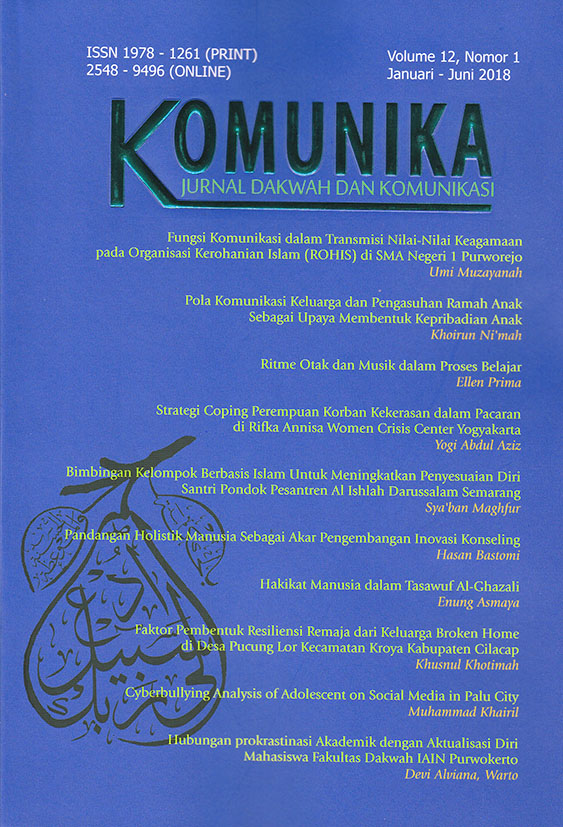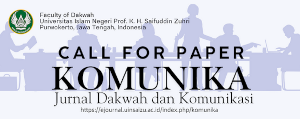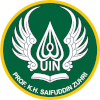Pola Komunikasi Keluarga dan Pengasuhan Ramah Anak Sebagai Upaya Membentuk Kepribadian Anak
DOI:
https://doi.org/10.24090/komunika.v12i1.1326Keywords:
Communication Pattern, Family, Parenting, Child PersonalityAbstract
One aspect that can not be separated from the process of child development is related to parenting. A good parenting process enables the child to grow and develop optimally. Using qualitative research approach, this research aims to observe, understand, and analyze how the application of the communication patterns done by several fami- lies, such as the efforts of parents to inculcate of cultural values that support of the child’s personality development. In addition, this study also aims to develop child friendly parenting models that contribute to the child’s personality development. In this case, the authors argue that positive and negative of child’s personality depends on values that have been instilled through family communication and parenting model. All parties, such as parents, families, communities, and governments have a role and responsibility to create a process and a good parenting environment for children.Downloads
Download data is not yet available.
References
Ahmadi, H. A. (2007). Psikologi Sosial. Jakarta: Rineka Cipta.
Baumrind, D. (1991). The influence of parenting style on adolescent competence and substance use. Journal of Early Adolescence.
Fitzpatrick’s. (2008). Dermatology in General Medicin. New York: McGraw-Hill.
Griffin, E. (2000). A First Look At Communication Theory. Boston: Mc Graw-Hill Companies.
Koentjaraningrat. (2009). Pengantar Ilmu Antropologi. Jakarta: Rineka Cipta.
Miles, M. B. dan A. M. H. (1992). Analisis Data Kualitatif. Jakarta: UI – Press.
Peraturan Pemerintah (PP) Nomor 21 Tahun 1994 ttg fungsi keluarga. (1994).
Putri Rimba Miftaqul Kasanah. (2014). Pengembangan Media Sumpit Asertif untuk Bimbingan Kelompok pada Siswa Kelas VIII di Smpn 3 Kutorejo Kabupaten Mojokerto. Jurnal BK UNESA, 04:03.
Rakhmat, J. (2002). Psikologi Komunikasi. Bandung: Remaja Karya.
Salkind, N. J. (2004). An Introduction to Theories of Human Development. New Delhi: Sage Publications. International Education and Publisher.
Sari. Dkk. (2010). Pengaruh Pola Komunikasi Keluarga dalam Fungsi Sosialisasi Keluarga terhadap Perkembangan anak. Jurnal Komunikasi Pembangunan, 08:02.
Shapiro, L. E. (1997). Mengajarkan Emotional Intelligence pada Anak. Terjemahan Alex Tri Kantjono. Jakarta: Gramedia Pustaka Utama.
Soetjiningsih. (2014). Tumbuh Kembang Anak. Jakarta: Penerbit Buku Kedokteran EGC.
Sunarti, E. (2006). Indikator Keluarga Sejahtera : Sejarah Pengembangan, Evaluasi, dan Keberlanjutannya. Bogor: Institut Pertanian Bogor.
Warren & Roucek. (1962). Sociology, An Introduction. London: Patterson Littlefield & Adams.
Yuli Setyowati. (2005). Pola Komunikasi Keluarga dan Perkembangan Emosi Anak. Jurnal Ilmu Komunikasi, 02:01.
Zastrow, C. H. (2006). Social Work with Groups: A Comprehensive Workbook. USA: Thomson Brooks/Cole.
Baumrind, D. (1991). The influence of parenting style on adolescent competence and substance use. Journal of Early Adolescence.
Fitzpatrick’s. (2008). Dermatology in General Medicin. New York: McGraw-Hill.
Griffin, E. (2000). A First Look At Communication Theory. Boston: Mc Graw-Hill Companies.
Koentjaraningrat. (2009). Pengantar Ilmu Antropologi. Jakarta: Rineka Cipta.
Miles, M. B. dan A. M. H. (1992). Analisis Data Kualitatif. Jakarta: UI – Press.
Peraturan Pemerintah (PP) Nomor 21 Tahun 1994 ttg fungsi keluarga. (1994).
Putri Rimba Miftaqul Kasanah. (2014). Pengembangan Media Sumpit Asertif untuk Bimbingan Kelompok pada Siswa Kelas VIII di Smpn 3 Kutorejo Kabupaten Mojokerto. Jurnal BK UNESA, 04:03.
Rakhmat, J. (2002). Psikologi Komunikasi. Bandung: Remaja Karya.
Salkind, N. J. (2004). An Introduction to Theories of Human Development. New Delhi: Sage Publications. International Education and Publisher.
Sari. Dkk. (2010). Pengaruh Pola Komunikasi Keluarga dalam Fungsi Sosialisasi Keluarga terhadap Perkembangan anak. Jurnal Komunikasi Pembangunan, 08:02.
Shapiro, L. E. (1997). Mengajarkan Emotional Intelligence pada Anak. Terjemahan Alex Tri Kantjono. Jakarta: Gramedia Pustaka Utama.
Soetjiningsih. (2014). Tumbuh Kembang Anak. Jakarta: Penerbit Buku Kedokteran EGC.
Sunarti, E. (2006). Indikator Keluarga Sejahtera : Sejarah Pengembangan, Evaluasi, dan Keberlanjutannya. Bogor: Institut Pertanian Bogor.
Warren & Roucek. (1962). Sociology, An Introduction. London: Patterson Littlefield & Adams.
Yuli Setyowati. (2005). Pola Komunikasi Keluarga dan Perkembangan Emosi Anak. Jurnal Ilmu Komunikasi, 02:01.
Zastrow, C. H. (2006). Social Work with Groups: A Comprehensive Workbook. USA: Thomson Brooks/Cole.
Downloads
Published
2018-04-20
Issue
Section
Articles
License
Authors who publish with this journal agree to the following terms:
- Authors retain copyright and grant the journal right of first publication with the work simultaneously licensed under a Creative Commons Attribution-ShareAlike 4.0 International License that allows others to share the work with an acknowledgement of the work's authorship and initial publication in this journal.
- Authors are able to enter into separate, additional contractual arrangements for the non-exclusive distribution of the journal's published version of the work (e.g., post it to an institutional repository or publish it in a book), with an acknowledgement of its initial publication in this journal.
- Authors are permitted and encouraged to post their work online (e.g., in institutional repositories or on their website) prior to and during the submission process, as it can lead to productive exchanges, as well as earlier and greater citation of published work (See The Effect of Open Access).

























